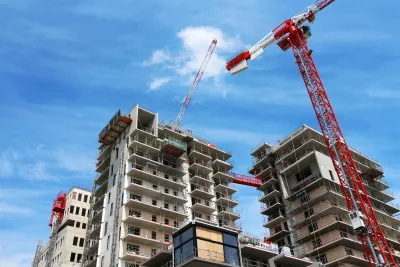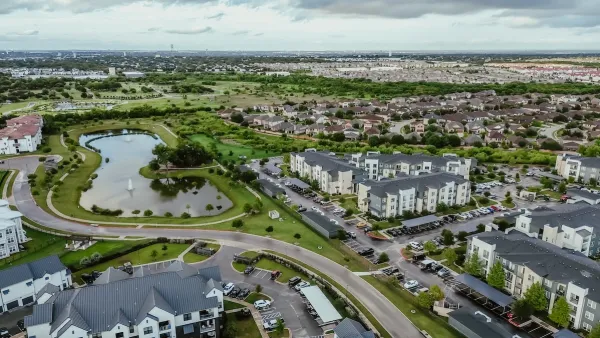Despite a strong belief in market forces in many other aspects of the economy, many Americans don’t see a correlation between housing supply and housing costs.

Writing in New York Magazine, Eric Levitz points out the odd breakdown of the “comprehension of the relationship between supply and affordability” when it comes to the way many Americans think about housing.
If the government tightly limited the production of sneakers, thereby triggering a bidding war over scarce athletic footwear, few would question whether the state’s deliberate suppression of shoe manufacturing was implicated in rising sneaker prices.
But “A 2022 study from political scientists in the University of California system found that a majority of Americans do not believe that increasing the supply of housing makes it more affordable.”
While it’s true that new housing sometimes appears to lead to higher rents, “the reason why new construction sometimes correlates with rising rents is not that housing is a good unlike any other, such that the more of it you create the more expensive it becomes,” Levitz explains.
“Rather, the reason is that developers build new housing in response to rising demand.” If local regulations or NIMBY opposition blocks needed new housing from being built, prices will go up. “Thus the less new housing that gets built, the faster rents will rise in a booming city”—see Austin, Texas for a recent example.
Levitz counters the “popular idea that new market-rate housing can’t reduce rents for working people because private developers prefer to build ‘luxury’ properties instead of affordable ones,” writing that the high cost of new housing is largely due to high land costs, and “new buildings will absorb high-income renters, reducing demand (and thus rental prices) for older housing units.”
Ultimately, “We can’t fully resolve our housing crisis by unshackling the invisible hand. But widespread skepticism about the relevance of ‘supply and demand’ to the housing market is making the crisis worse.”
FULL STORY: Rent Growth Is Slowing (Where Housing Got Built)

National Parks Layoffs Will Cause Communities to Lose Billions
Thousands of essential park workers were laid off this week, just before the busy spring break season.

Retro-silient?: America’s First “Eco-burb,” The Woodlands Turns 50
A master-planned community north of Houston offers lessons on green infrastructure and resilient design, but falls short of its founder’s lofty affordability and walkability goals.

Delivering for America Plan Will Downgrade Mail Service in at Least 49.5 Percent of Zip Codes
Republican and Democrat lawmakers criticize the plan for its disproportionate negative impact on rural communities.

Test News Post 1
This is a summary

Test News Headline 46
Test for the image on the front page.

Balancing Bombs and Butterflies: How the National Guard Protects a Rare Species
The National Guard at Fort Indiantown Gap uses GIS technology and land management strategies to balance military training with conservation efforts, ensuring the survival of the rare eastern regal fritillary butterfly.
Urban Design for Planners 1: Software Tools
This six-course series explores essential urban design concepts using open source software and equips planners with the tools they need to participate fully in the urban design process.
Planning for Universal Design
Learn the tools for implementing Universal Design in planning regulations.
EMC Planning Group, Inc.
Planetizen
Planetizen
Mpact (formerly Rail~Volution)
Great Falls Development Authority, Inc.
HUDs Office of Policy Development and Research
NYU Wagner Graduate School of Public Service





























